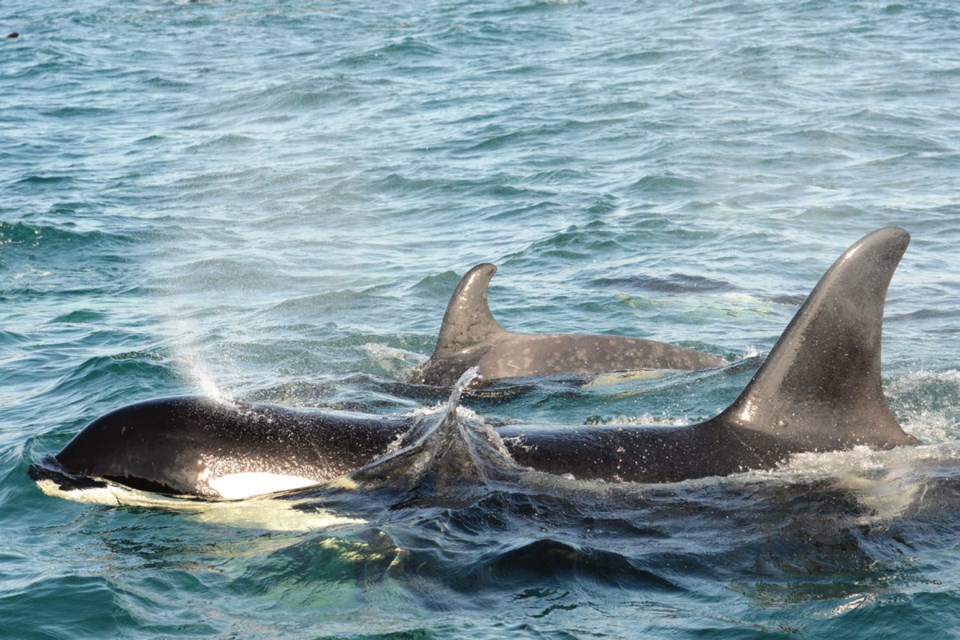Commentary by a senior science and policy analyst at the David Suzuki Foundation
This year, southern resident orcas returned to the Salish Sea later than ever recorded. All three pods arrived just nine days before World Orca Day, July 14, which in turn is just one day before the chinook fishery opens.
Some pod members haven’t yet been spotted, raising concerns for their lives.
In July, southern resident sightings typically hit their annual high when the endangered whales return to their spring and summer feeding grounds in the Salish Sea. Their prolonged absence likely reflects a lack of sufficient food to support their population.
Late arrival means the orcas have only 10 days to feed with minimal interference — perhaps too little, too late. The chinook salmon fishing season re-opens July 15, contributing to orca food scarcity and vessel noise disturbance.
A day before the orcas’ arrival, Fisheries and Oceans Canada released a study confirming that access to chinook salmon is the most critical aspect of killer whale recovery.
These orcas need to eat about 1,000 chinook salmon a day, even more to recover the population.
Each human disturbance from fishing or whale watching that prevents an orca from catching chinook becomes a caloric deficit.
Recovering orcas requires rebuilding threatened and endangered chinook populations. Opening the fishery late to protect these stocks will benefit the orca. But allowing people to keep chinook they catch decreases the number available and increases fishing efforts, which makes waters noisier, interfering with the orcas’ ability to hunt.
Although a small portion of the orcas’ favourite feeding grounds remain closed to recreational fishing, most areas of the whales’ critical habitat are now open.
World Orca Day celebrates the special place these magnificent marine mammals hold in our culture and hearts, but it’s also a stark reminder of their difficulties.
It should be an incentive for people to voluntarily leave chinook for the orcas.
After all, it commemorates the successful release of an orca named Springer back in the wild after a successful save and recovery.
In 2002, Springer was found, malnourished and alone, near Seattle.
Recognizing this World Orca Day is even more relevant, as only 76 endangered southern resident whales remain.
If people truly care about the orcas’ fate, they should understand that the whales require protections beyond their species.
Orcas are apex predators at the top of their food chain, with sophisticated social structures, emotional behaviours, feeding strategies and unique languages.
A year ago, the news about a mother orca carrying her dead calf for more than a week caught international media attention. The public grieved with her, creating an outcry to support the southern residents.
Since then, the government has taken action in the orcas’ favour, but we need a multi-decade conservation approach to ensure their survival.
The southern resident orcas’ poor status is directly linked to the scarcity of Chinook salmon, their diet staple. Chinook returns to the Fraser River this spring are well below long-term historical averages with many populations threatened or endangered, leaving only a tiny surplus to support the fishery.
Although there have been periodic rebounds, B.C. Chinook salmon stocks have been declining since the late 1990s.
Climate change and unforeseeable acts of nature can also affect endangered stocks, increasing the uncertainty of their survival, which makes the need to keep chinook in the water even more critical. Ocean acidification, invasive species and warmer waters reduce the ability of salmon to reach their spawning beds.
The recent Big Bar landslide blocking a key salmon run is one unpredictable event that will affect the number of salmon able to reproduce. While the federal government is making efforts to help the salmon get upstream to spawning grounds, there just aren’t many rescue options in that remote location.
When the fishing season officially opens, people and whole communities should voluntarily keep chinook in the water to help the southern residents. Every fish that survives improves the orcas’ chances for survival and the existence of chinook for generations to come.
At least 95 per cent of chinook salmon making their way to the Fraser need to stay in the water to meet DFO’s sustainability targets.
For the sake of the orca and the future of the fishing communities, this summer, don’t hook a chinook.



